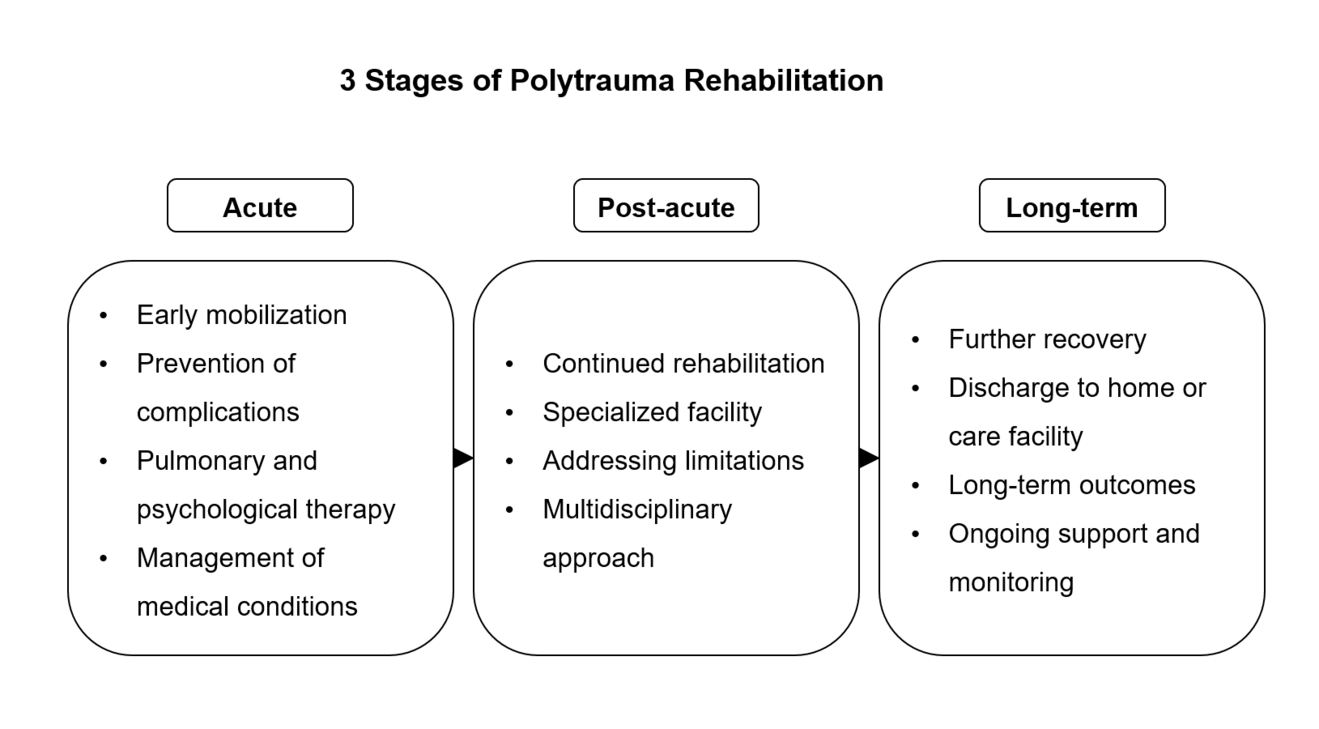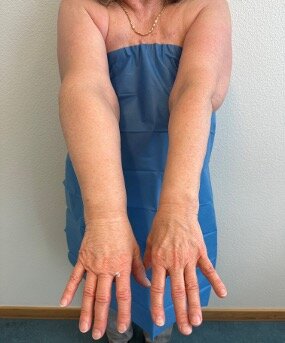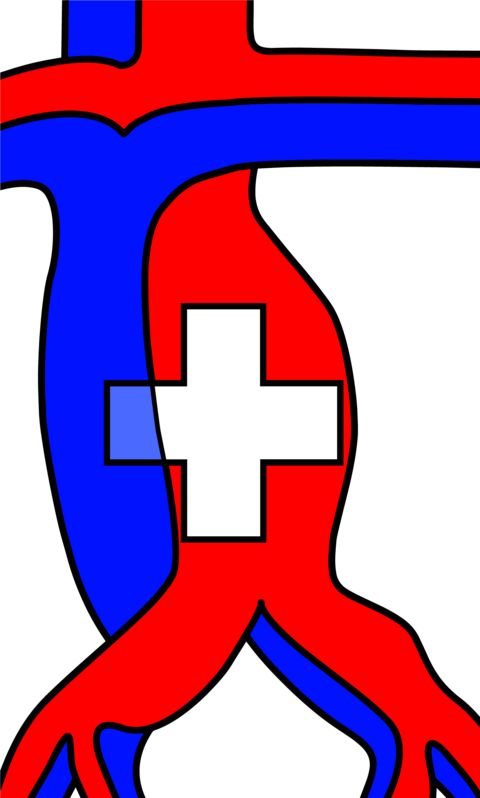Rehabilitation following polytrauma is a crucial phase in the treatment pathway for severely injured patients. Despite its immense importance for long-term functional outcomes, social reintegration, and return to work, there is still a lack of solid evidence or internationally agreed-upon guidelines for the rehabilitation of this complex patient group. In clinical practice, this leads to considerable variability, as many institutions rely on their own resource-dependent standards.
The international society for traumatology and orthopaedics, SICOT (Société Internationale de Chirurgie Orthopédique et de Traumatologie), has recognized this problem and established its own section for polytrauma rehabilitation in 2023 (SICOT Congress Cairo). In cooperation between the Trauma and Rehabilitation Sections, this working group aims to develop structured recommendations for the rehabilitation of polytrauma patients. The foundation for this is a newly published systematic literature review titled “The Three Stages of Polytrauma Rehabilitation – a recommendation and a systematic literature review on behalf of SICOT” (Klingebiel et al., International Orthopaedics, 2024).
The authors systematically searched the MEDLINE and Embase databases for publications on rehabilitation strategies for polytrauma patients from 2000 to 2023, identifying over 5,000 articles. Of these, only seven met the inclusion criteria (six reviews and one survey). None of the identified studies reached a high level of evidence. Clinical comparative studies or randomized trials evaluating the effectiveness of different rehabilitation approaches are entirely lacking.
The literature analysis shows that rehabilitation can broadly be divided into three phases: the acute phase in the hospital, the post-acute phase in specialized facilities, and the late outpatient phase. Each phase involves specific goals, therapies, and challenges – from preventing complications, to functional recovery, to occupational and social reintegration. Rehabilitation is an interdisciplinary endeavor that extends far beyond traditional physiotherapy, involving psychologists, social workers, and occupational therapists, among others.
A key finding of the study is that there is not only a lack of evidence, but also a lack of internationally recognized standards for coordinating the various rehabilitation phases and prioritizing interventions.
The SICOT working group’s study provides a structured overview of the existing literature and proposes an algorithm outlining an ideal rehabilitation pathway. This is intended to serve as a foundation for the development of recommendations and, in the future, international guidelines.
Since polytrauma rehabilitation plays such an important role in recovery, quality of life, and returning to everyday life, it’s time for it to be given more attention. It needs to be better organized, based on solid evidence, and involve different healthcare professionals working together. SICOT’s initiative is a valuable step toward making that happen.
Interview with Roman Pfeifer and Felix Klingebiel by Beat Schnüriger
What was your (Roman Pfeifer) role in the SICOT working group “Polytrauma Rehabilitation”?
As chair of the Trauma Committee in SICOT, I led the working group and acted as a liaison between the Polytrauma and Rehabilitation Committees. Initially, it was important to bring these two independent interest groups together and channel their combined expertise. This required several online and face-to-face meetings at SICOT conferences. As the project progressed, we assigned specific tasks, such as conducting systematic literature research and compiling the results, to interested members of the working group.
Which subgroup of polytrauma patients do you think has the greatest risk of “going missing”?
The primary issue is that rehabilitation programmes are typically established at the local level, thereby rendering them dependent on local resources. The paucity of research focusing on polytrauma and rehabilitation is a matter of concern. However, it is important to note that studies conducted on patients with monotrauma frequently cannot be directly transferred to a polytrauma situation. The enhancement of polytrauma rehabilitation can be achieved through the implementation of a structured framework, the establishment of minimum standards, and the continuation of scientific research between polytrauma centres.
I could imagine that the main problem is that specialized rehabilitation, e.g. neurorehabilitation after traumatic brain injury, does not focus enough on e.g. rehabilitation of extremity injuries. Do you agree with this?
The biggest challenge when treating patients with multiple injuries is ensuring that all injuries receive adequate rehabilitation. Unlike isolated injuries, there is no standard treatment pathway for multiple injuries, as the combinations can vary greatly. While there is usually a 'leading' injury that determines the choice of rehabilitation clinic, the other injuries must also be taken into account. We believe that the first step should be to define the exact goals and minimum requirements for polytrauma patients in the “acute”, “post-acute” and “late” phases of rehabilitation. With these goals in mind, we can then further develop the rehabilitation of the musculoskeletal system.
How do you rate the quality of rehabilitation for polytrauma patients in Switzerland in relation to the global benchmark?
The quality of rehabilitation in Switzerland is undoubtedly very high. However, there is a lack of scientific studies comparing the measures taken in individual trauma centres, as different rehabilitation protocols are often used from centre to centre.
Rehabilitation standards vary significantly across Europe. I believe there is room for improvement and adjustment here. The aim of this project is to stimulate discussion and research in this area.
How high is the proportion of polytrauma patients in Switzerland who manage to reintegrate into the world of work, for example? Or are there only figures from abroad?
The professional reintegration of polytrauma patients is a complex process that requires comprehensive rehabilitation and support to enable the best possible return to work. International studies show a return to work (RTW) rate of 50-80% after multiple trauma. We are not primarily aware of Swiss figures. However, this could be addressed through future focused research to demonstrate the quality of rehabilitation.
What do you think needs to be done in the future to increase the rate of reintegration after polytrauma?
Firstly, we should stimulate and promote research projects focusing on polytrauma rehabilitation. Currently, we have insufficient data on the effectiveness of our rehabilitation programmes. In addition, evidence-based protocols are necessary to improve the rehabilitation of polytrauma patients. These protocols maximise rehabilitation potential after serious injuries. Moreover, improving outcomes for polytrauma rehabilitation requires setting and defining minimum requirements and standards on a global and European scale.











